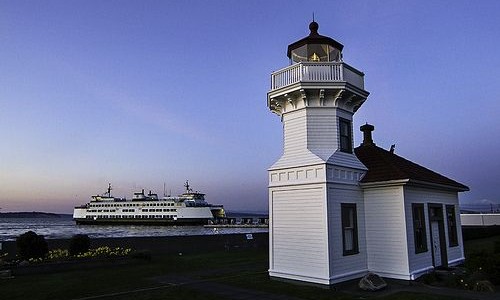By Joanne Mulloy, President, Mukilteo Historical Society
When Mukilteo Historical Society (MHS) volunteers weed the gardens at the Mukilteo lighthouse, they always receive compliments and thanks. The flower beds are well known for their beauty because the community of gardeners over the years put much thought, planning and hard work into them. The community gathers there for celebrations, including weddings and proms, with photographers capturing this backdrop for the happy couples. This wasn’t always so and came about by accident.
When the lighthouse was owned by the United States Coast Guard, the flower beds were filled with red rock, as a low maintenance method to keep the weeds away. In 1997, the City of Mukilteo took over ownership and maintenance of the gardens and grounds. MHS moved from the old Rosehill School to the lighthouse grounds in 1999. One Sunday, a volunteer working in the gift shop was bothered by the weeds along Quarters B and took action. Since no one stopped her, she continued and others joined in. The City Manager then told the MHS President that they could weed along the buildings but to leave the row of beds leading to the lighthouse. At that time, there was a fence along both Quarters A and B to create privacy for the families living there. Soon, the fence needed painting, as it is prone to do, and MHS members volunteered to paint it. This was the first of many fence painting parties to come. This earned the gardeners the trust of the City to expand their weeding.
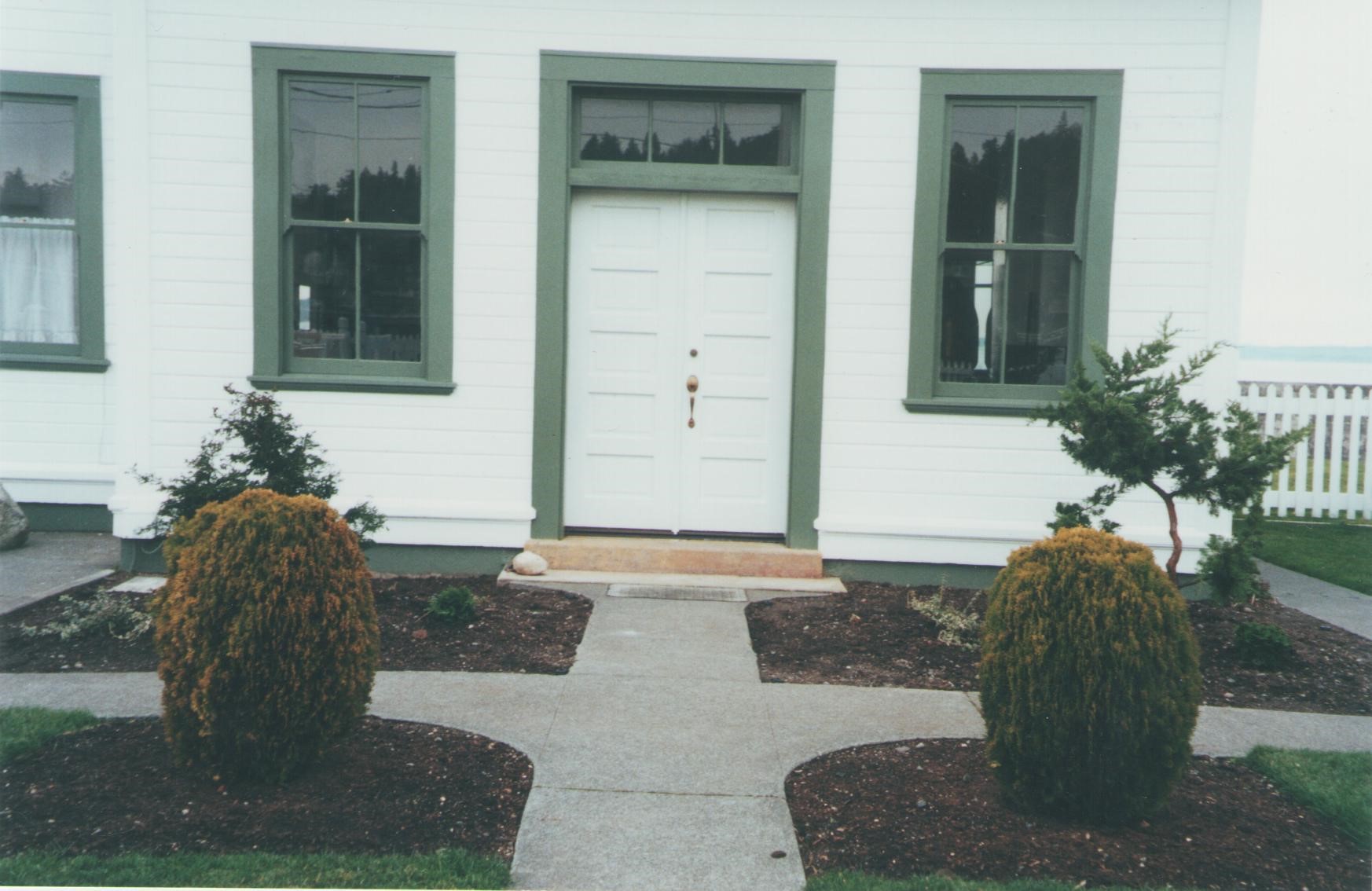
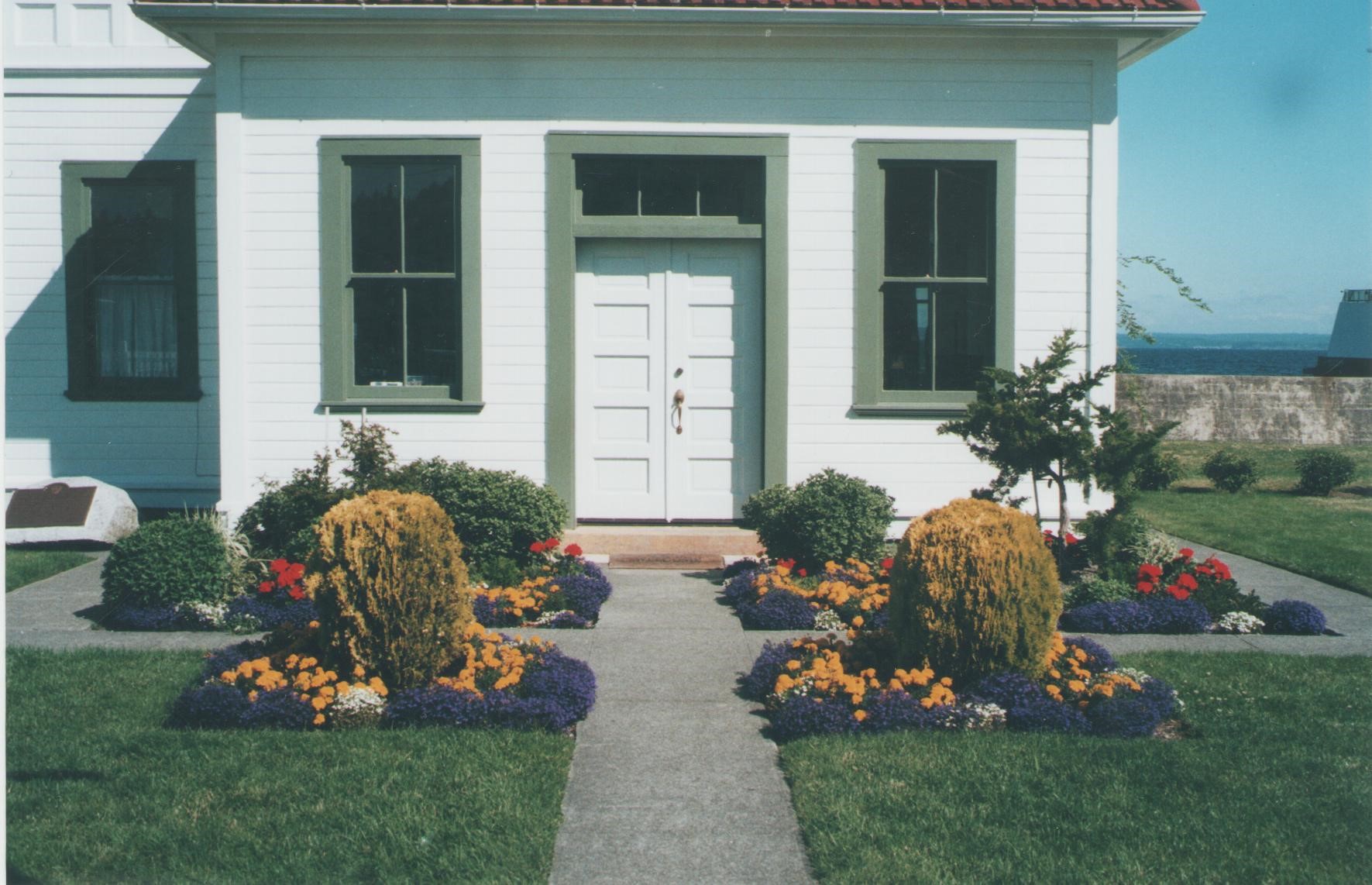
Over the years, planters brought cuttings, bulbs or seeds from home that are still there today: day lilies in the raised bed, black-eyed Susans in the sunnier beds and crocosmia and daisies in the lilac beds near the Losvar condos. Others took plantings or seeds home and the old fashioned holly hock seeds were shared with many. The lilacs were planted by Coast Guardsman Kurt Betz and his wife Michelle when they lived in Quarters B. Plantings in remembrance of those who had passed include: the striking lacecap hydrangea outside of the gift shop for Glee Shaver; the red azaleas in front of the lighthouse for Ralph Loree; the rugosa rose for Digger Dan Caley and the Paul’s Glory hosta in honor of Paul Winters. People still take the rosehips from the rose bush as a memory. When the National historical places marker and rock were placed, two Korean lilacs were planted near it.
George McConnell would purchase a bag of 300 daffodils each year at Costco and slip them to President Ellen Koch to plant so he could see the blooms from his home. At George’s memorial, his son had a bag of daffodil bulbs for Ellen, since George bought them before he passed away. Eleven years ago, a friend of Ellen’s grandson needed a service project, so they planted 75 red tulips. Bulbs have not been planted on the lighthouse grounds since and yet they continue to come up each year.
The lighthouse gardens were known for their bright red, beautiful poppies, known as “lighthouse poppies”. The seeds were shared in little packets to take home for planting. This went on for some time until a volunteer’s policeman neighbor warned they be destroyed because they were opium poppies!
A lot of work was done by these early teams of volunteers to establish the gardens. Years were spent removing red rock, the soil was replenished and many annuals were purchased to fill the flower beds. During that manual labor, long term friendships were formed through fun and laughter. There was a gardening shed on the grounds with flower boxes on each side that was later moved to the community garden. A garden party was held in the shed and all the women wore hats. The raised flower bed near the seawall was originally smaller and built from railroad ties. In 2001, a volunteer and the City created the existing raised bed and the railroad ties were removed. A significant number of gardening projects were completed that year and the fences were removed, somewhat reluctantly.
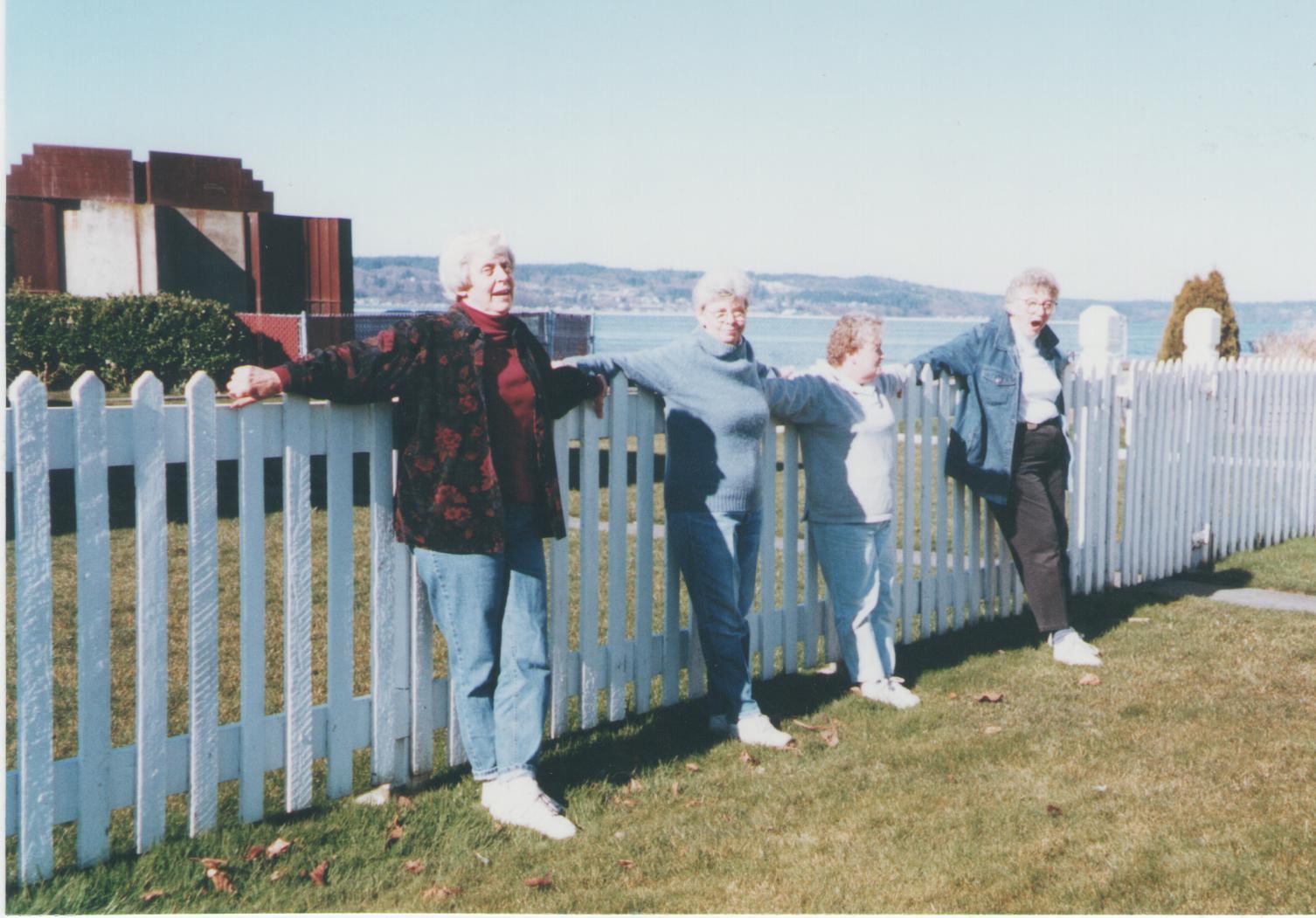
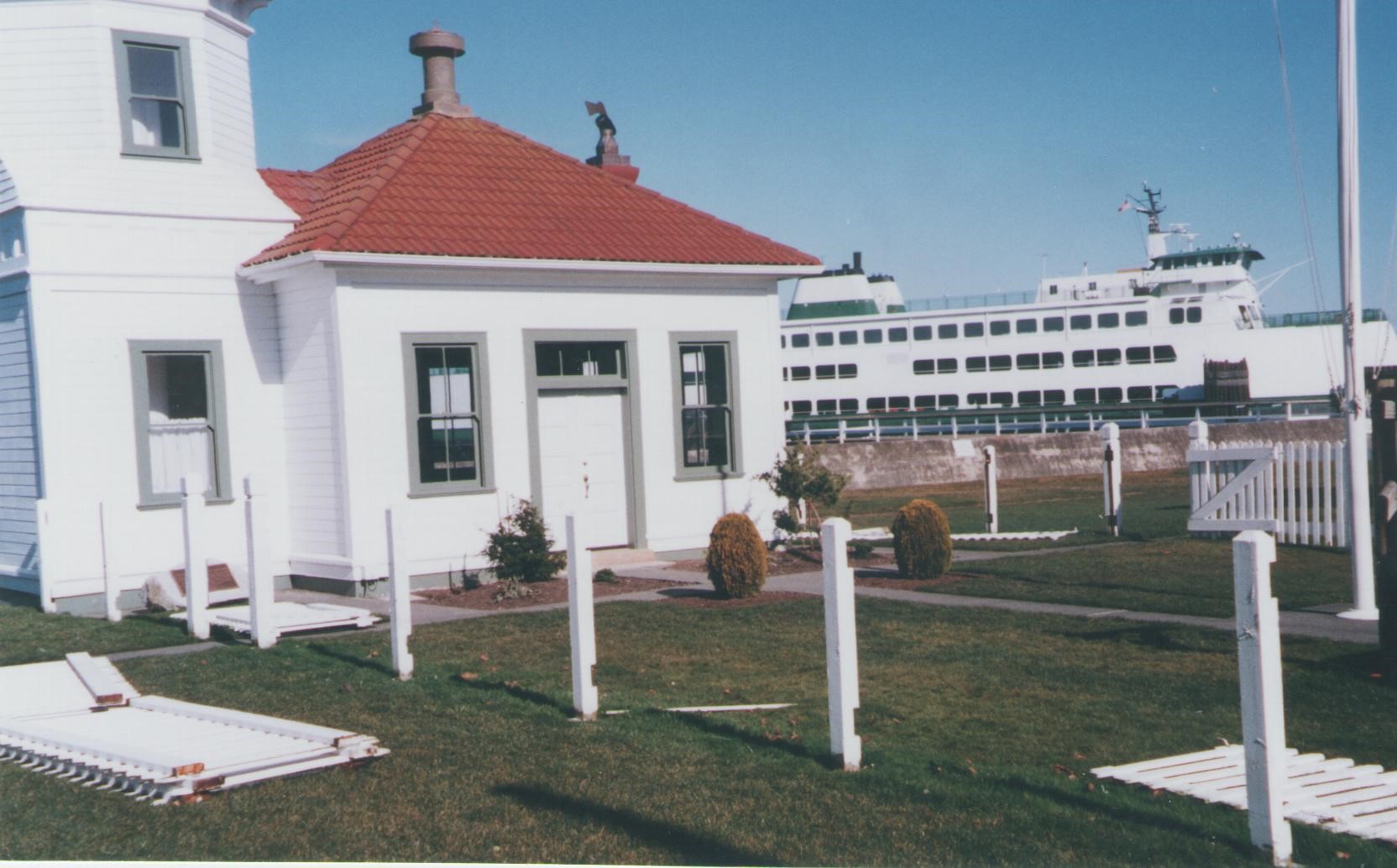
Before mass planting day began, plants were purchased and planted over weeks in the summer. Inspired by Forest Park’s mass planting and as an effort to get younger people involved, the annual event began. The early gardeners made the perfect decision to have red, white and blue flowers along the paths leading to the lighthouse. Petunias were planted for a while, but they required too much deadheading. The switch was made to red geraniums, white alyssum and blue lobelia. Calendula was planted which volunteered into several beds. Impatiens were selected to go with the tobacco plants along Quarters B. There is a tradition of using augers to dig holes the size of the pots so planting is quick. This started with an electric drill and now battery operated augers are used. The pots are placed where they will be planted, those running the augers go behind and dig holes, then, planters follow behind and fill the holes with plants and soil. Sheila McGillivray was the greeter for the mass planting for many years until she passed away last year. She is missed.
The annual mass planting for the lighthouse grounds will be held on Saturday, June 1st. The public is invited to join in planting. If you would like to become a member of MHS, here is a link to an application, including volunteer opportunities: https://mukilteohistorical.org/support-shop/membership/
Originally published in the 5/1/2019 issue of the Mukilteo Beacon.
